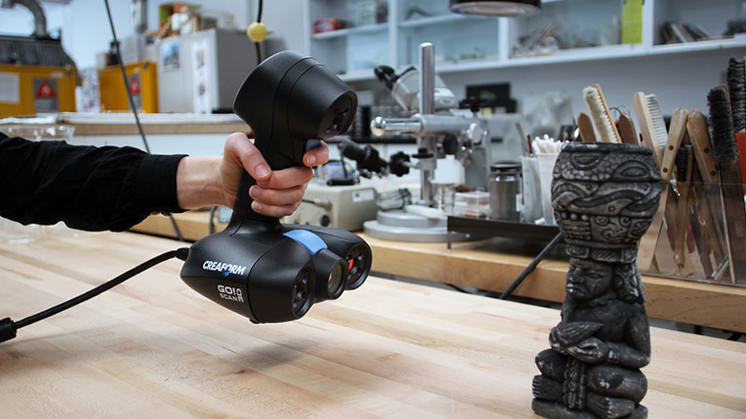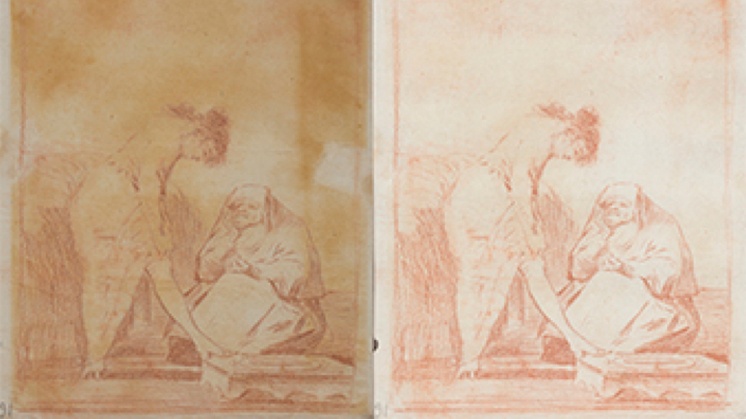
Using a 3D scanner —Go!SCAN 3D by Creaform  — to restore a sculpture.
— to restore a sculpture.
Precision that would impress even a Jedi Master... The latest technologies applied to the restoration of artwork have achieved spectacular results that remain consistently true to historical, artistic and cultural heritage. Some of them up close:
 Laser ablation
Laser ablation
The modern laser guns used in artwork restoration are calibrated with such precision that they can vaporise a layer of dirt or grime without damaging the piece. The speed of this technique, which neither contaminates nor causes residues, reduces costs so much so that restoration projects that had once been thought of as impossible are now rendered feasible.
 Ultrasonic transmitters
Ultrasonic transmitters
Experts had little doubt when studying and examining the effects that the latest technologies in disciplines such as medicine, topography or industrial design would have on the field of restoration. The case of ultrasonic transmitters is no exception, as they are used to eliminate kidney stones and have also proven to be highly effective for cleaning water-sensitive works of art.

 Biocleaning
Biocleaning
We see yet another example in the latest microbiology techniques: bacteria can be trained to feed on specific substances such as saline crusts, glues or nitrates. Biocleaning is thus putting an end to the use of highly aggressive solvents and acids.
 Cryogenic cleaning
Cryogenic cleaning
Similarly surprising are the results obtained by projecting dry-ice at 80 degrees below zero at speeds nearing 1,000 kilometres per hour. This sort of cryogenic cleaning is used on stone, ivory, metals and even antique books because the technique leaves no trace of humidity.
The future is already here
What new technologies will come to the rescue of our historic-artistic heritage? TechnoHeritage 2017  External link, opens in new window. showcased the immediate future: nanomaterials, biocide agents, super-hydrophobic coatings and laser scanners will restore the heritage of humanity, restoring it to the splendour envisioned by its creators.
External link, opens in new window. showcased the immediate future: nanomaterials, biocide agents, super-hydrophobic coatings and laser scanners will restore the heritage of humanity, restoring it to the splendour envisioned by its creators.




